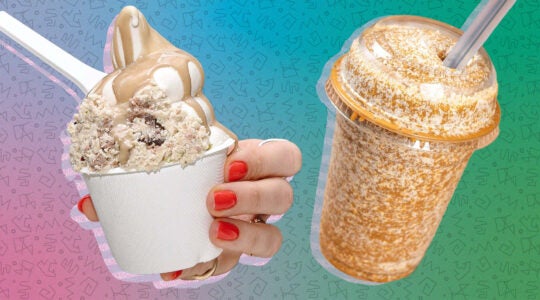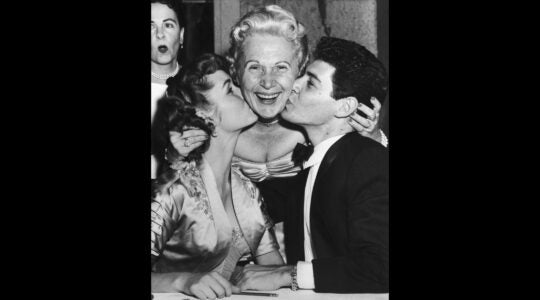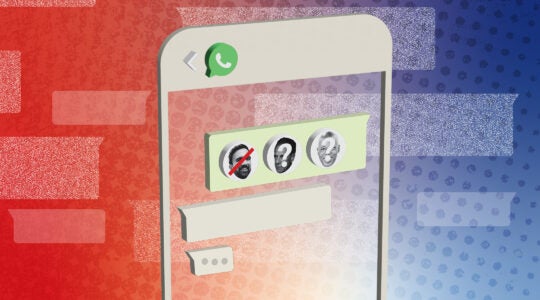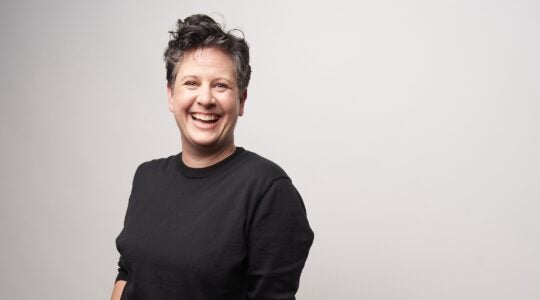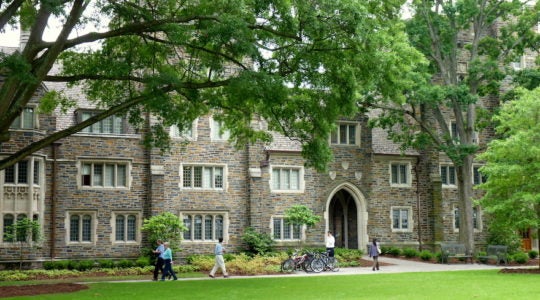Downtown, just blocks from Ground Zero, is the Anne Frank Center USA, with its echoes of that other Ground Zero still smoking in the soul.
Manhattan’s Ground Zero and its new 9/11 museum evoke a beautiful morning turned to desperation, death and ash. The Anne Frank Center promotes almost an opposite idea, that out of desperation, death and ash can come a beautiful morning, shining with tolerance and goodness — a dream helped considerably by Anne’s diary conveniently ending before she could describe the cruelty that killed her after eight months in Auschwitz and Bergen Belsen.
The Center, which has had a low profile since 1959 when the main Anne Frank Center in Amsterdam opened a New York branch, has attempted a larger public profile since it moved to a street-level gallery and classroom on Park Place in 2012; it says its outreach programs and exhibitions reached over 120,000 people last year. So it seemed a promising spot to reflect on a number of high-octane news stories of late in which the Holocaust has invariably — even inexplicably — come up.
For example, Los Angeles Clippers’ disgraced owner Donald Sterling, after delivering his now-famous racist telephone rant, is told by V. Stiviano, his black-Mexican mistress, that his racism was “like saying, ‘Let’s just persecute and kill all of the Jews.’ …. Wasn’t it wrong then? With the Holocaust? And you’re Jewish, you understand discrimination.”
Sterling replied, “You’re a mental case, you’re really a mental case” for comparing the magnitude of the Holocaust to his nasty telephone talk. Oddly, even within their crude conversation, the universalist lessons of the Shoah could be invoked by a woman who described herself as a “silly rabbit,” while Sterling invokes the spirit of Elie Wiesel’s particularist maxim that the Holocaust shouldn’t be compared to anything.
This month, the Anti-Defamation League released a global survey that found that only 77 percent of those in the Americas — yes, “only,” compared to 94 percent in Western Europe — have a “Holocaust awareness.” Among those who have that awareness, around the world, 32 percent believe it is either a myth or exaggerated. The numbers of awareness plummet for those younger than 50.
In Amsterdam, “Anne,” a much-written-about new play about Anne Frank, opened earlier this month. The play expands the story beyond the diary and into Anne’s imaginary afterlife as a young writer in Paris. Meanwhile, in a nearby Dutch town, the play’s poster was smeared with anti-Semitic graffiti. In February, hundreds of copies of Anne’s diary were defaced in Tokyo.
Thane Rosenbaum, a professor at Fordham Law School and a novelist and essayist who has written extensively about the Holocaust, told The Jewish Week, “We had to know that the impulse to make the Holocaust more accessible would not end well. It’s not the kind of historical event that was capable of widespread understanding.
“Paradoxically, the obsession with the Holocaust and the desire to make the world know its lessons created a diluted and desecrated landscape of Holocaust trivia and kitsch. We would have been better off treating the Holocaust as a sacred event, privileged information undertaken by those who wished to explore the quiet study of its mysteries,” he said.
Anne Frank may have been one of the Six Million, but the Anne Frank Center hardly sees her story as uniquely Jewish, rather a source of universalist lessons. The Center does not observe Yom HaShoah, while on Yom HaShoah Jews speak of the need for a strong Israel. If there had been an Israel in 1940, Anne might be celebrating her 85th birthday in June. The Center has two wall displays on Darfur; none on Israel.
The Center features a modest theatrical presentation, “Letters From Anne and Martin,” with actors reading from Anne’s writing, pre-Auschwitz, and Martin Luther King Jr.’s 1963 “Letter from a Birmingham Jail.” According to the center, the two “write of their hopes and plans for a peaceful and unified world.”
Some might find the equating of their experience offensive. But Hilary Eddy Stipelman, the center’s director of outreach and exhibitions, explains, “When people are confined there is a shared longing for freedom, a shared feeling of wanting to stand up and fight. So we talk about Anne’s diary as an actual form of resistance, very similar to the way Dr. King wrote and gave speeches as his form of resistance. That’s the connection we’re drawing; using writing to resist.”
The Center, Stipelman said, “doesn’t go into a lot of detail about what happened in the camps simply because we are often working with fourth, fifth or sixth-grade students and they don’t have that history yet.”
The Center does include one wall display regarding Anne’s final days. Anne’s friend, Hannah Goslar, remembers speaking to Anne in Bergen Belsen: “It wasn’t the same Anne. She was a broken girl,” said Hannah. “She said, ‘We don’t have anything at all to eat here, almost nothing, and we are cold.’” Hardly the Anne of “Letters From Anne and Martin.”
In 1997, Frank Rich wrote in The New York Times that the original Broadway play was written in a time when “American Jews were embracing the assimilationist nirvanas of suburbia….” The women in the Frank family were sympathetic to Jewish tradition and enjoyed Shabbat dinners at other people’s homes, but Otto Frank famously ordered the play to not be “too Jewish.”
The Center, by design, is not too Jewish, either. “We certainly don’t talk about Jewish culture the way the Museum of Jewish Heritage would,” says Stipelman, referring to the museum on Battery Place. “We’re a non-sectarian organization. So while we do, of course, say that Anne was Jewish, and the reason she lost her life was because of her faith, we don’t spend much time talking about Jewish culture.”
Abraham Foxman, national director of the ADL and a Holocaust survivor, said, “I believe that [the Shoah] is a Jewish experience that has a universal message — but first you have to recognize the Jewish story. One of the critiques of the [flagship Center in Amsterdam] is that they make Anne Frank into a universal victim. And Jews — certainly, we survivors — resent that. We miss the Jewishness.”
One wall at the center recreates Anne’s bedroom wall. We hear chirping and other outdoor sounds that Anne might have enjoyed. Outside, there was a chestnut tree that Anne loved. The tree fell in a storm in 2010, but not before “the Sapling Project” was born; 11 saplings to be replanted around the United States. Most recently, one was planted on the U.S. Capitol lawn.
The Sapling Project teaches, says the center’s website, that the Holocaust is but one injustice among many, and Germany’s crimes are mirrored by our own. “As Americans,” says the website, “we sometimes think of the horrors of the Holocaust as events that only happen in far off places and not on our own shores. But the United States has its own questions on human rights, as evidenced by treatment of Native Americans, slavery and segregation and by the ongoing struggle for full civil rights for women and people of color.”
Foxman said, “I understand where the [Center is] coming from, but would I have written it differently? Yes. But what makes me uncomfortable,” said Foxman of the Sapling statement, “is [the Shoah was not] a discussion of hate in general. [It was] a Jewish experience.”
On Anne’s birthday, June 12, the center’s annual Spirit of Anne Frank Awards will honor the “Hidden Children of the Holocaust.” Some hid, says the center, with non-Jews (as did Foxman), or in attics, closets, barns, fields or cellars. Most never had a chance.
Imagine a hidden child who could write, as did Anne (Dec.24, 1943): “Whenever someone comes in from outside, with the wind in their clothes and the cold on their cheeks, I feel like burying my head under the blankets to keep from thinking, ‘when will we be allowed to breathe fresh air again?’”
With her mother and sister dead, Anne died alone, with the cold on her cheeks.
The New York Jewish Week brings you the stories behind the headlines, keeping you connected to Jewish life in New York. Help sustain the reporting you trust by donating today.
